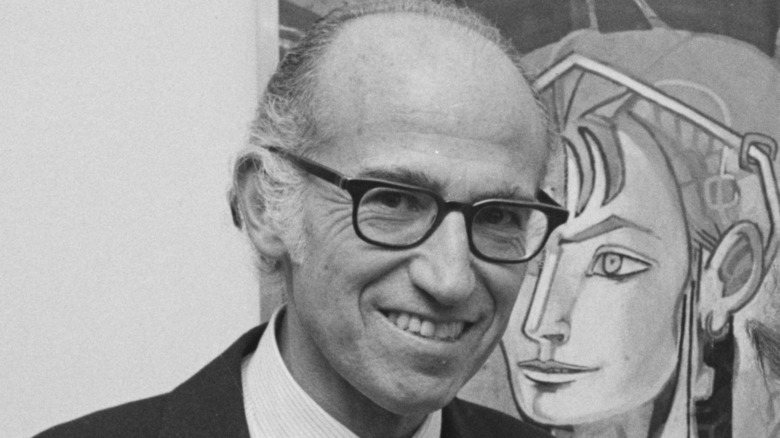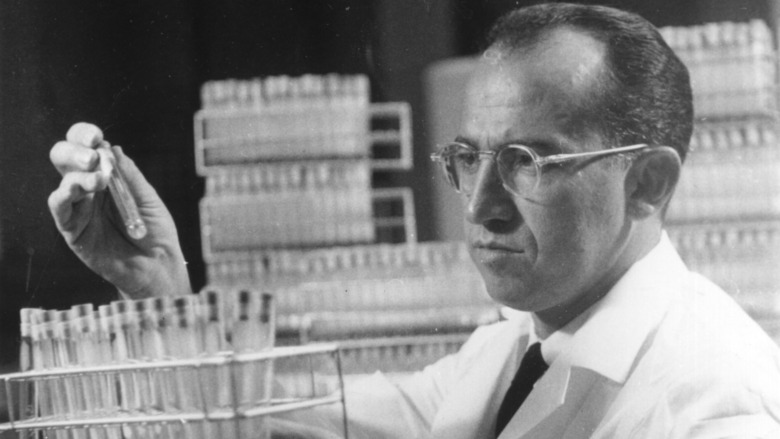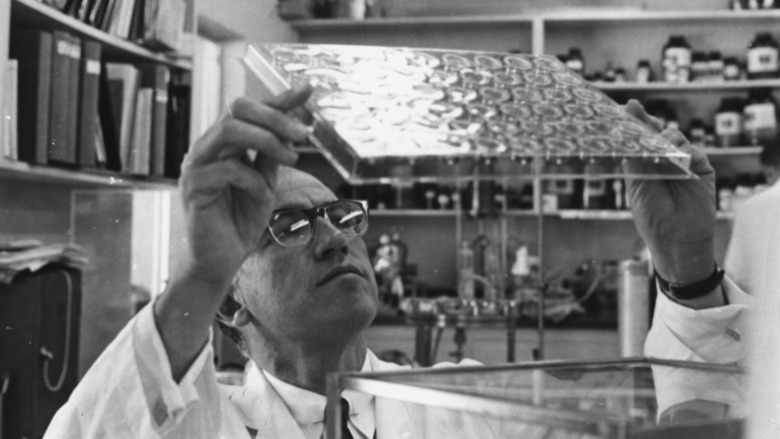The Truth About Jonas Salk's AIDS Vaccine Work
Famed virologist Dr. Jonas Salk saved millions of lives with his discovery of the polio vaccine in the mid-1950s. Prior to Dr. Salk's development of the safe and effective vaccine, which used "killed" polio cells to immunize patients with a much lower risk of infecting them, over 15,000 children were disabled by the disease every year, per the CDC. Following the distribution of the polio vaccine throughout the late 1950s, cases in the United States dropped to under 100 cases per year, and by the 1980s, polio had been effectively eliminated.
However, while Dr. Salk's work with the polio vaccine is well known, fewer people are aware of the effort he put towards developing an AIDS vaccine. In his later years, he opened the Salk Institute for Biological Studies to fulfill his dream of creating a "collaborative environment where researchers could explore the basic principles of life and contemplate the wider implications of their discoveries for the future of humanity" (per the Salk Institute).
Salk worked on developing an AIDS vaccine used 'killed' cells of the virus
In the 1980s, AIDS was a little-known, much-feared, and widely stigmatized disease, which had affected 100,000 Americans by the end of the decade, according to Avert. It also had no cure, but Dr. Salk believed that an AIDS vaccine was possible, saying, "the principles of immunology do apply, even to this agent," per The New York Times.
Dr. Salk and his team set to work attempting to make AIDS, like polio, a thing of the past, using his effective polio vaccine as a model. As with his polio vaccine, he focused on using "killed" cells, which were taken after stripping the AIDS virus's outer coat and then killing the cells with chemicals, irradiation, and mineral oil, per The New York Times. This differed from previous attempts to develop an AIDS vaccine, which were made using the AIDS virus's outer coat and focused on preventing people from ever contracting the disease. Instead, Dr. Salk's team believed that their killed vaccine could help defeat the virus, not by preventing infection, but by enabling the immune system to destroy the AIDS virus cells already inside the body.
Salk's vaccine did not eradicate the AIDS virus in human subjects
Salk, along with researchers from the National Institutes of Health and University of Southern California, conducted vaccine tests by first injecting chimpanzees with the killed vaccine. At first, the animal subjects showed promising results, responding with a strengthened immune response and decreasing detectable amounts of the virus.
The researchers also tested the vaccine on human subjects who had begun to show symptoms of the virus but had not yet developed full-blown AIDS. However, while the human volunteers suffered no ill effects from the vaccine itself, their bodies were unable to clear themselves of the virus and did not demonstrate lowered detected amounts, per The New York Times.
Unfortunately, Dr. Salk died in 1995, before an effective AIDS vaccine could be found. Regardless, his pioneering work in immunology was undoubtedly influential in expanding the field, and his vaccine work has saved millions of lives.
Dr. Salk continued to research vaccines until his death, and remained a vocal advocate for vaccinations throughout his life.


